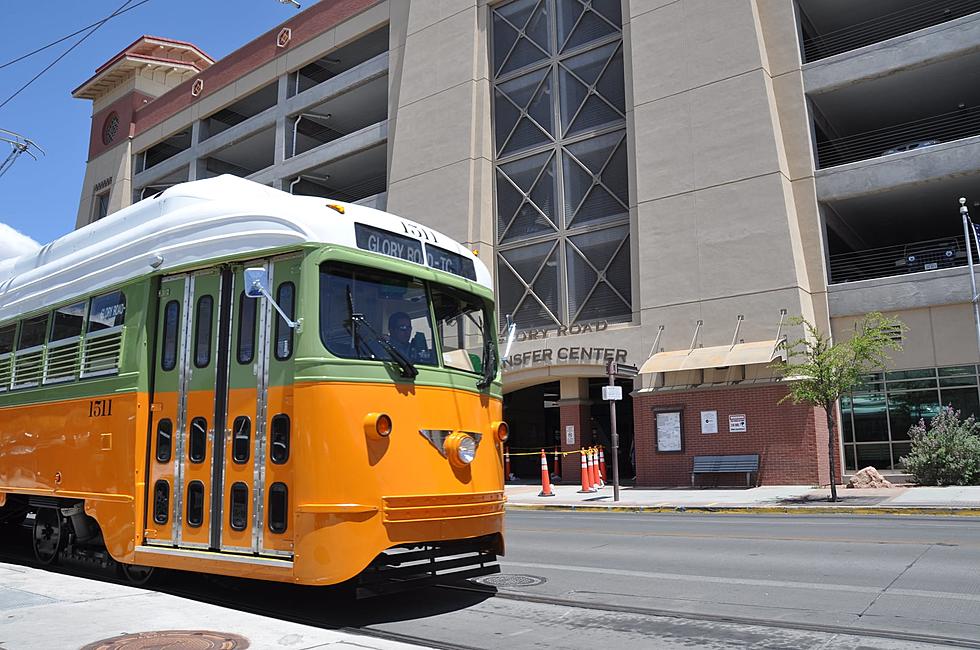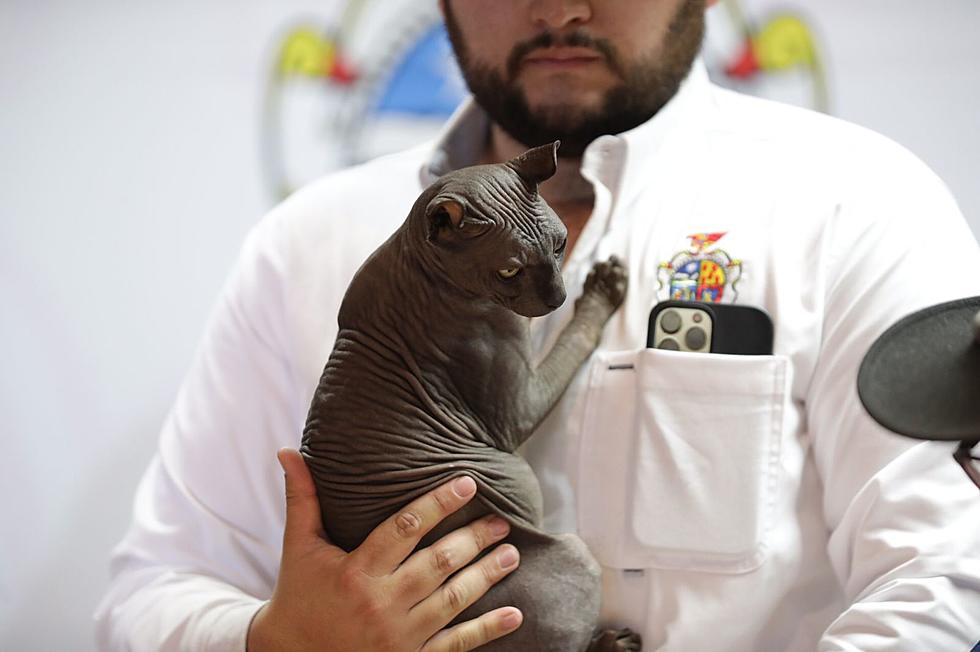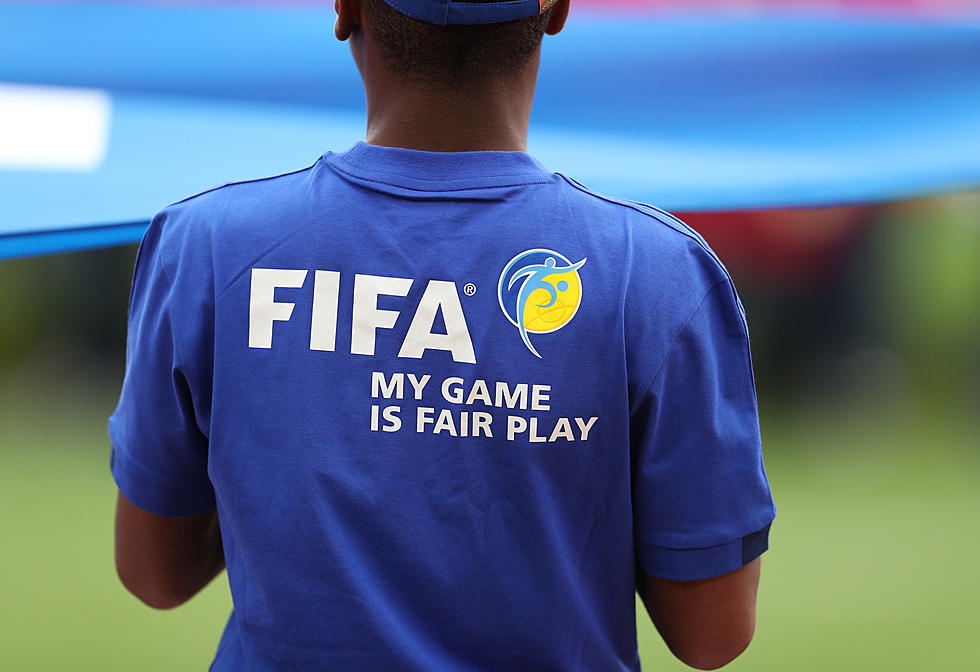
FIFA to Announce 2026 World Cup US Sites, Paring From 17
NEW YORK (AP) — As FIFA prepares to announce the 2026 World Cup sites on Thursday — and make high-profile cuts — Alan Rothenberg thought back to when stadiums were picked for the 1994 tournament he headed in the United States.
“They gave the rights to the host country, and the host country basically ran the whole thing,” he said. “Here, everything is done in-house by FIFA. So it’s been a really long and arduous process. The terms have been incredibly difficult for cities to cope with.”
Seventeen stadiums in 16 areas remained in contention to be among 10-12 selected from the U.S. for the tournament, which will be co-hosted with Mexico and Canada. The U.S. will host 60 of the 80 games under FIFA’s plan, including all from the quarterfinals on, and there was little doubt over the venues for 10 games each in the other nations.
Last time, the nine U.S. stadiums were announced during a Waldorf-Astoria news conference 816 days before the opener. This time, the decisions will be revealed by FIFA in a Fox television studio 1,456 days before the likely start.
In handicapping the bidders, there appeared to be several tiers:
—Locks: AT&T Stadium in Arlington, Texas, and Met Life Stadium in East Rutherford, New Jersey, along with SoFi Stadium in Inglewood or the Rose Bowl in Pasadena, California.
—In the hunt: Mercedes-Benz Stadium in Atlanta; M&T Bank Stadium in Baltimore; Gillette Stadium in Foxborough, Massachusetts; NRG Stadium in Houston; Arrowhead Stadium in Kansas City, Missouri; Hard Rock Stadium in Miami Gardens, Florida; Nissan Stadium in Nashville, Tennessee; Lincoln Financial Field in Philadelphia; Levi’s Stadium in Santa Clara, California; and Lumen Field in Seattle.
—Least likely: Paul Brown Stadium in Cincinnati; Empower Field at Mile High in Denver; and Camping World Stadium in Orlando, Florida.
—In the other countries: Mexico City’s Estadio Azteca, which hosted the 1970 and ’86 finals and will become the first stadium in three World Cups; Guadalajara’s Estadio Akron; Monterrey’s Estadio BBVA; Toronto’s BMO Field and Vancouver, British Columbia’s B.C. Place. Edmonton, Alberta’s Commonwealth Stadium was likely to be dropped.
“This country has even more than 17 cities capable of hosting the World Cup, and it will be a pity for those that miss out,” said Telemundo’s Andrés Cantor, who has broadcast the tournament since 1990 and will co-host the announcement. “But I don’t think it’s going to take away from the desire of the soccer fan to attend the game, wherever their country lands in 2026.”
Rothenberg said the decision remained uncertain in the final week between SoFi, which may need pricey renovations to create a wider field, and the Rose Bowl.
“Even to this moment, there’s calls going on all day long trying to sort it out,” he said Tuesday. “There will be discussions between the LA host committee and FIFA right up almost to the moment of the announcement. The costs of LA are a huge part of the difficulty.”
Just two of the contending stadiums hosted games in 1994, the Rose Bowl joined by Orlando. Dozens of training complexes have been built for MLS teams, creating a far better infrastructure than at the first World Cup in the U.S., when Italy worked out at The Pingry School in Basking Ridge, New Jersey, and the U.S. practiced ahead of its opener on a wind-swept field at Oakland University in Rochester, Michigan.
“It’s completely different from the standpoint that in a lot of these cities there’s a base of fans that have been sort of built up because of MLS,” said Tony Meola, the U.S. starting goalkeeper at that ’94 Cup. “We know Los Angeles and New York and Miami always had soccer fans, and they weren’t necessarily American soccer fans, but they were fans of some teams around the world. I think we’ve got just a little bit more of a fever for the game. From a fan’s perspective, the infrastructure in the cities are so much more developed. And tickets will never be a problem in our country if we host the World Cup every four years.”
All U.S. stadiums forecast capacities of 60,000 or larger. Three have retractable roofs and one a fixed roof. Ten have artificial turf but would switch to temporary grass.
This will be the first 48-nation World Cup, up from the 32-team format used since 1998. In a tournament likely to run from June 11 to July 12, but possibly start and end a week later, there will be 16 groups of three nations. Each team will play two first-round games instead of three as part of an awkward arrangement in which one nation in each group opens against an opponent who will have already played. The top two in each group advance to a 32-nation knockout bracket.
Revenue has skyrocketed: The 1994 Cup drew a record 3.59 million fans and grossed $580 million, which produced a profit of $133.25 million for FIFA and $50 million for the U.S. organizing committee. FIFA said the 2018 World Cup in Russia produced $5.357 billion in revenue over the four-year cycle and a $3.533 billion surplus.
FIFA requires bidders to obtain “a limited tax exemption” for FIFA, teams and other entities involved, and the Missouri Legislature last month approved a sales tax exemption for June and July 2026. Chicago dropped out in 2018 over FIFA's demands.
Rothenberg anticipates many of U.S. states and cities will refuse to comply.
“I think that’s a fair assumption in most of the jurisdictions. Some of them, they may just build it into the stadium price and other things, but getting an actual waiver may be difficult,” he said. “Ultimately, it just means another cost that the host committee, host city, is going to be responsible for.”
ARLINGTON, TEXAS
AT&T Stadium, the home of the Dallas Cowboys, is the largest venue in the NFL. The stadium, which opened in 2009, has a retractable roof and an artificial surface. Its capacity is about 93,000, but the stadium set an attendance record of more than 105,000 for an NFL game the year it opened. It also hosted the 2010 NBA All-Star Game. The nearby city of Dallas hosted games at the 1994 World Cup at the Cotton Bowl.
ATLANTA
Mercedes-Benz Stadium is one of three NFL-MLS venues. The Atlanta Falcons and Atlanta United both play home matches at the stadium, which opened in 2017 and seats about 75,000. The stadium has a retractable roof and an artificial surface, and it also hosted college basketball’s Final Four in 2020.
BALTIMORE
M&T Bank Stadium is another NFL stadium, hosting games for the Baltimore Ravens. The stadium opened in 1998, seats about 71,000 and has a grass surface. Baltimore is about 40 miles from Washington, which hosted matches at the 1994 World Cup at RFK Stadium.
CINCINNATI
One of only three NFL stadiums not named after a sponsor, Paul Brown Stadium is the home of the Cincinnati Bengals. The stadium is named after Bengals founder Paul Brown, who had previously founded the Cleveland Browns. Brown died in 1991. The stadium opened in 2000 and has a seating capacity of about 67,000 with an artificial surface.
DENVER
From football to soccer to rugby league, Empower Field at Mile High has hosted it all. The venue, which replaced the old Mile high Stadium, opened in 2001 and has a capacity of about 77,000 with a grass surface. It is the home stadium of the Denver Broncos but also has hosted Gold Cup and Nations League matches in the CONCACAF region. In 2018, England beat New Zealand 36-18 in a rugby league match.
EAST RUTHERFORD, NEW JERSEY
Just across the Hudson River from New York, MetLife Stadium opened in 2010 as a replacement for Giants Stadium. Both the New York Jets and New York Giants play NFL games at the venue, which has a seating capacity of about 87,000 and has an artificial surface. The previous stadium hosted several matches at the 1994 World Cup and the 1999 Women’s World Cup.
EDMONTON, ALBERTA
Commonwealth Stadium opened in 1978, only a few weeks before Edmonton hosted the Commonwealth Games. The stadium has a seating capacity of about 56,000. It is the home stadium of the CFL’s Edmonton Elks. It has an artificial surface. The stadium hosted matches at the 2015 Women’s World Cup and also served as the venue for the 2001 track and field world championships.
FOXBOROUGH, MASSACHUSETTS
The Boston suburb of Foxborough hosted games at the 1994 World Cup, but Gillette Stadium is a different venue, built near the old Foxboro Stadium. The new venue opened in 2002 and has a seating capacity of about 70,000. The stadium, which has an artificial surface, hosts home games in football for the New England Patriots and in soccer for the New England Revolution. The town is about 30 miles south of Boston and 21 miles north of Providence, Rhode Island.
GUADALAJARA, MEXICO
Used mostly for soccer, the Estadio Akron opened in 2010 and hosted the Copa Libertadores finals that year and the opening ceremony of the Pan American Games in 2011. Mexican soccer club Chivas plays its home matches at the venue, which has a capacity of about 48,000 and a grass surface. The city hosted matches at both the 1970 and 1986 World Cups, but at a different stadium.
HOUSTON
NRG Stadium hosts football, soccer and even some rodeo. The stadium, which opened in 2002, is the home of the Houston Texans and has staged World Cup qualifying matches for the United States. But it also serves as a home venue for some Mexican national team friendlies. The Houston Livestock Show and Rodeo also is held annually at the stadium, which has a seating capacity of about 72,000 and an artificial surface. Its retractable roof and air conditioning will be important given the area's summer heat and humidity.
INGLEWOOD, CALIFORNIA
The city of Los Angeles has two candidates for the World Cup and one of them is the newest on the list, SoFi Stadium. Built on the site of the Hollywood Park RaceTrack and opened in 2020, the stadium hosts both the Los Angeles Rams and the Los Angeles Chargers of the NFL. It has a seating capacity of about 70,000, an artificial surface and a fixed roof.
KANSAS CITY, MISSOURI
Arrowhead Stadium is the home of the Kansas City Chiefs. The stadium opened in 1972 and has been renovated several times, last in 2010. The seating capacity is about 76,000, making it the sixth-largest NFL stadium. The stadium is famous for its noise records, with opposing teams sometimes struggling to communicate because of the racket. It has a grass surface.
MEXICO CITY
Estadio Azteca became the first stadium to host two World Cup finals when Argentina beat West Germany 3-2 in the 1986 title match. It previously hosted the final for the 1970 tournament, when Brazil defeated Italy 4-1 — with Pelé scoring the first goal. Perhaps even more famous was the 1986 quarterfinal match at the stadium between Argentina and England, when Diego Maradona scored a goal by punching the ball into the net. The stadium opened in 1966 and has a capacity of about 87,000 with a grass surface. The venue’s record attendance for soccer, however, is said to be 119,853.
MIAMI GARDENS, FLORIDA
Located in suburban Miami, Hard Rock Stadium hosts both NFL and college football games. The Miami Dolphins and the University of Miami both play at the venue, which has a seating capacity of about 67,000, a grass surface and a roof that covers spectators but is open over the field. The stadium opened in 1987 and also hosts tennis tournaments.
MONTERREY, MEXICO
One of the newer stadiums in contention, Estadio BBVA opened in 2015 and has a grass surface. Mexican club Monterrey plays it home matches at the stadium. Seating capacity is about 53,000. Three matches at the 1986 World Cup were held in Monterrey, but at Estadio Tecnológico.
NASHVILLE, TENNESSEE
Nissan Stadium has some experience with soccer. The stadium hosted group matches during the 2017 CONCACAF Gold Cup and has also been the venue for World Cup qualifiers. The stadium opened in 1999 and has a capacity of about 70,000. It has a grass surface and also serves as the home of the NFL’s Tennessee Titans, who have started planning for a new stadium.
ORLANDO, FLORIDA
The proposed venue in Orlando has World Cup experience. Then known as the Citrus Bowl, the 65,000-seat stadium hosted matches at the 1994 World Cup. Olympic soccer matches were also played at the stadium two years later, when nearby Atlanta hosted the 1996 Games. The stadium opened in 1936 and has been expanded several times. It has an artificial surface.
PASADENA, CALIFORNIA
The second candidate in Los Angeles is among the most famous stadiums in the world. The Rose Bowl hosted the 1994 World Cup final when Brazil beat Italy on penalties. Perhaps even more famous was the final of the 1999 Women’s World Cup, when Brandi Chastain scored the winning penalty kick for the United States against China and then took off her shirt in celebration. The stadium, which has a capacity of about 88,000 and a grass surface, has hosted many other events since opening in 1922, including cycling at the 1932 Olympics.
PHILADELPHIA
Lincoln Financial Field opened in 2003, and its first event was a soccer match between Manchester United and Barcelona. The stadium serves as the home venue for the Philadelphia Eagles and Temple University. The 2015 CONCACAF Gold Cup final was played at the stadium, with Mexico beating Jamaica 3-1. The stadium seats nearly 70,000 spectators and has an artificial surface.
SANTA CLARA, CALIFORNIA
Located about 40 miles south of San Francisco, Levi's Stadium opened in 2014 and has hosted several major football games since, including the Super Bowl in 2016. It serves as the home stadium of the San Francisco 49ers. The stadium has a capacity of about 71,000 and a grass surface.
SEATTLE
Lumen Field is the home stadium of two professional soccer teams and the Seattle Seahawks of the NFL. The stadium, which opened in 2002 and has a capacity of about 69,000, hosts the Seattle Sounders of MLS and the OL Reign of the National Women’s Soccer League. The Pacific Northwest Seismic Network records shaking in the stadium caused by the crowd. The stadium has an artificial surface.
TORONTO
BMO Field is the home of the Toronto Argonauts of the CFL and Toronto FC of MLS. Originally constructed as a soccer venue, it has hosted several international events since opening in 2007, including under-20 World Cup games for both men and women and rugby matches. In 2010, it became the first venue outside the United States to host the MLS Cup. The stadium also hosted matches for the 2015 CONCACAF Gold Cup. It has a capacity of about 28,000 and a hybrid surface, and the bid envisions an expansion to about 45,000.
VANCOUVER, BRITISH COLUMBIA
Opened in 1983, BC Place has served as the home of the BC Lions of the CFL since its inauguration. The stadium also hosts home games for the Vancouver Whitecaps of the MLS. The stadium has a capacity of about 54,000 and was last renovated in 2011. It has an artificial surface.
More From 600 ESPN El Paso









